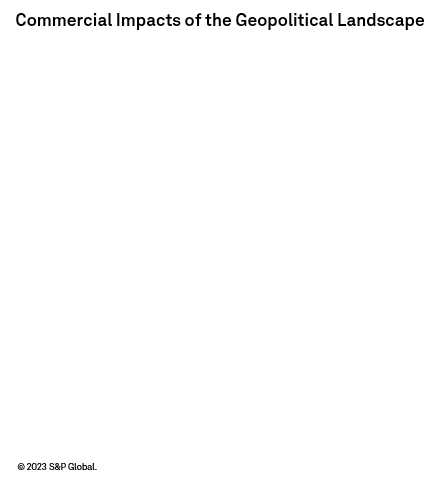S&P Global Offerings
Featured Topics
Featured Products
Events
S&P Global Offerings
Featured Topics
Featured Products
Events
S&P Global Offerings
Featured Topics
Featured Products
Events
S&P Global Offerings
Featured Topics
Featured Products
Events
Language
Featured Products
Ratings & Benchmarks
By Topic
Market Insights
About S&P Global
Corporate Responsibility
Diversity, Equity, & Inclusion
Featured Products
Ratings & Benchmarks
By Topic
Market Insights
About S&P Global
Corporate Responsibility
Diversity, Equity, & Inclusion

Published: January 13, 2023

By Dr. Lindsay Newman
Highlights
The next decade will be a period of disequilibrium.
A set of interlinked challenges will define the years ahead: climate change, making the energy transition, technological guardrails and cybersecurity, pandemics, and inequities.
We expect countries to meet these challenges with a new pragmatism, in which they cooperate across spheres of mutual interest and simultaneously contest across spheres of national interest.
Aworld ordered for decades by globalization and geo-economics has of late become a world oriented around geopolitics. Shocks initially thought to be time limited, from the COVID-19 pandemic to the conflict in Ukraine, have proven more lasting and pervasive. Some say we have already landed somewhere new — in a fragmented world where the U.S. has lost its global footing and mainland China is steadily gaining ground.
Entering 2023, we believe that we have not yet reached a new horizon. By 2030, we may have visibility into the international order taking shape. But for the remainder of this decade, we are unlikely to find solid ground in one equilibrium or another — whether unipolar, bipolar, multipolar or a vacuum.
Instead, a set of crosscutting challenges will define the years ahead. These tests are interlinked and borderless: climate change, the energy transition, technological guardrails and cybersecurity, pandemics, and inequities. No country will be able to solve these challenges alone, and no country can solve these challenges for all.
We expect countries to meet these challenges by adopting a new pragmatism: cooperating across spheres of mutual interest (energy transition agendas, pandemic preparedness, humanitarian partnerships) while concurrently contesting across spheres of national interest (economic policy, industrial strategy, critical technologies and resources, supply chain security). Already, we see countries negotiating economic partnerships while one partner maintains trade relations with a third, sanctioned country. We also see a renewed nonaligned movement that is possible and intentional.
Perhaps no country reflects that arising pragmatism better than India, which, according to S&P Global Market Intelligence data, is projected to become the third-largest contributor to global real gross domestic product growth over the next decade, behind only China and the U.S.
India sits alongside the U.S., Japan and Australia in the Quadrilateral Security Dialogue (Quad), a partnership committed to advancing “a free and open Indo-Pacific.” Formed after the 2004 Indian Ocean tsunami as a humanitarian and loosely based security partnership, the Quad framework now covers a range of shared challenges, including health security, maritime data-sharing and working groups on climate change, supply chains and advanced technology. India is also a partner in the Indo-Pacific Economic Framework for Prosperity, launched in 2022 by the U.S. and 12 other countries representing 40% of the world’s GDP, and dedicated to building a connected, resilient, clean and fair economy.
Yet, even as India partners with the U.S. (and others) on these multidimensional initiatives, it also maintains economic and trade ties elsewhere, including with strategic competitors of the U.S. According to S&P Global’s Global Trade Analytics Suite, in late 2022, China remained India’s third-largest export market by value, and by far its largest supplier of imported goods. Even more indicative of current geopolitical dynamics is India’s positioning during the Russia-Ukraine conflict. According to S&P Global’s Commodities at Sea database, as European markets imposed sanctions and sought to disengage from Russian energy resources, India became the second-largest recipient of Russian crude oil in 2022. The previous year, India did not represent a top 10 export market for Russian crude oil. While Indian Prime Minister Narendra Modi cautioned Russian President Vladimir Putin in September 2022 that “today’s era is not an era of war,” according to S&P Global’s available trade data, that sentiment had only a marginal impact on India’s Russian crude imports.
This form of expedient engagement, of collaborating on communal challenges while competing in the national interest, is not only an India story. Turkey, a U.S. ally through NATO, is also a purchaser of the Russian-manufactured S-400 missile system, for which the U.S. imposed sanctions on the Republic of Turkey’s Presidency of Defense Industries. South Africa is a member of the Just Energy Transition Partnership with the EU, U.K. and U.S., which aims to support the country’s decarbonization efforts, even as it remained a leading exporter of coal in 2022, including to its BRICS partners India and (less so) China.
As the demand for oil defined geopolitics in the 20th century, the scramble to secure minerals critical for the energy transition is likely to shape geopolitics in the 21st century, leaving countries working side by side to contain a changing climate while leveraging protectionism and localization. The U.S. approach is telling. On the global stage it launched the multilateral Minerals Security Partnership in 2022 in recognition of the role critical minerals will play in “our shared future.” At home, however, recent administrations have prioritized securing a “Made in America” supply chain for critical minerals, labeling overreliance on “foreign sources and adversarial nations” for critical minerals as national and economic security threats.
In this landscape, pressure points in one part of the world create ripples globally, with vast commercial impact. This decade has brought trade wars, sanctions expansion, de-dollarization debates, supply chain disruptions, resource protectionism and labor market reshuffling. As the world navigates toward a new equilibrium, it will be pragmatism, if anything, that defines the interregnum.
Chart 1

A world rebalancing
Outlook for India’s economic growth and policy platforms
COP27: Implementation constraints amid the Russia–Ukraine conflict
Critical minerals: Illuminating the path to an electric future
Next Article:
The End of Lower for Longer: A Post-COVID Silver Lining? >
This article was authored by a cross-section of representatives from S&P Global and in certain circumstances external guest authors. The views expressed are those of the authors and do not necessarily reflect the views or positions of any entities they represent and are not necessarily reflected in the products and services those entities offer. This research is a publication of S&P Global and does not comment on current or future credit ratings or credit rating methodologies.
Content Type
Language

